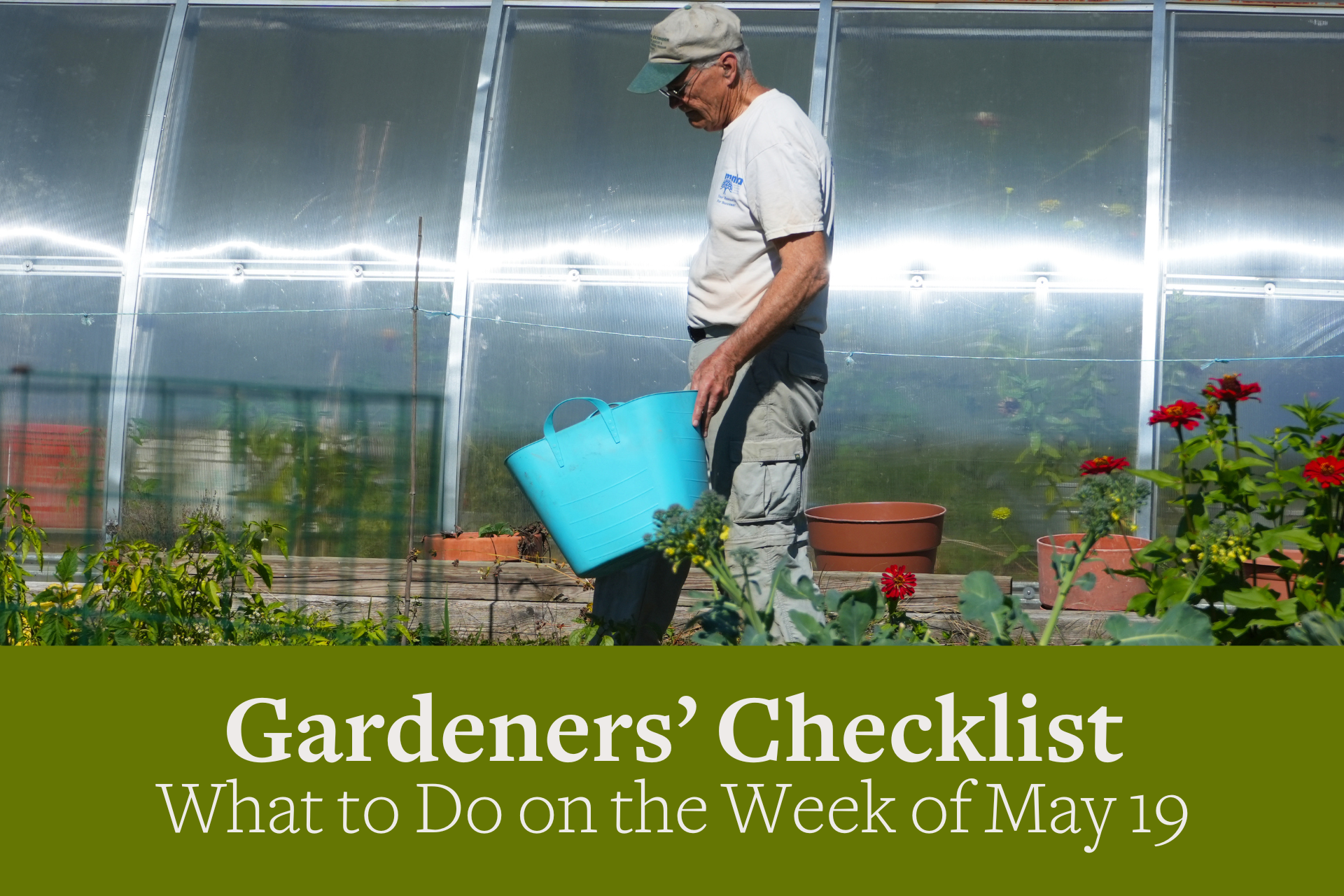You are here
Gardeners Checklist: Here Is What to Do on the Week of May 19
Gardeners Checklist: Here Is What to Do on the Week of May 19
By Ron Kujawski
* Beat the rush. Shop early for annuals and vegetable plants this Memorial Day weekend. Most of these can be planted now, but with the erratic weather this spring, I will wait one more week before planting tomatoes, peppers, eggplant, and tender annuals Hey, my Momma din’t raze no dumbbell!
* Don’t overlook using vertical space, especially if garden space is limited. In the vegetable garden, grow cucumbers and other vine crops on trellises. In the landscape, train clematis, Dutchman’s pipe, and climbing roses to grow on trellises.
* Start seeds of Brussels sprouts indoors or in a prepared seedling bed in the garden. Brussels sprouts taste best when harvested in the fall.
* Wait until oregano is about to flower before snipping shoots to use fresh or to dry. The flavor of oregano, thyme, sage, and other herbs is most intense just before they flower. However, if you have an immediate need for an herb to flavor your culinary creations, harvest them at any time.
* Plant low-growing thyme between the stepping stones of walkways. Don’t worry if they sprawl over the stones and get stepped on. They’ll survive the trampling and will release a pleasant fragrance.
* Think river birch (Betula nigra) when shopping for birches for the landscape. Native to Massachusetts, river birch is resistant to bronze birch borer, an insect that can be lethal to white birches. The bark of river birch varies from cinnamon-brown to salmon-pink.
* Remove any weeds that are in flower. Most of these are biennials – plants that bloom and set seed in the second year of their two-year existence. The other weeds in bloom now are winter annuals (weeds that sprouted late last summer or during the fall and are now completing their life cycle by setting seed).
* Take a break from gardening chores and family picnics this Memorial Day to honor those who have given their lives in military service to our country.
*
Picking up on last week’s discussion of mulching around trees, here are a few more tips. Stick with organic mulches as opposed to gravel, marble chips, lava rocks, colored stones, or other inorganic materials. Organic mulches such as wood chips and bark nuggets break down and contribute organic matter to improve soil structure and provide nutrients for healthy tree growth. When applying mulch to grassy areas around a tree, it’s not necessary to remove the grass. A three-inch deep layer of mulch is enough to smother grass. Don’t be overly aggressive in adding fresh mulch to the old mulch every year. The total depth of mulch, old and new, should not exceed three inches.
Ron Kujawski began gardening at an early age on his family's onion farm in upstate New York. Although now retired, he spent most of his career teaching at the UMass Extension Service. He serves on Berkshire Botanical Garden’s Horticulture Advisory Committee. His book, Week-by-Week Vegetable Gardener’s Handbook, is available here.
Help Our Garden Grow!
Your donation helps us to educate and inspire visitors of all ages on the art and science of gardening and the preservation of our environment.
All donations are 100 percent tax deductible.


